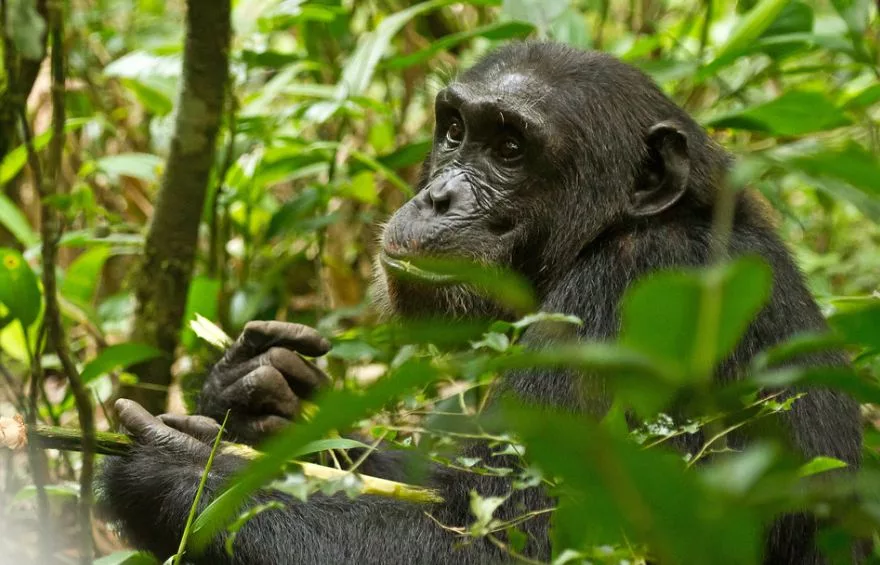Why Visit Budongo Forest?
Budongo Forest is a wildlife-rich Uganda forest reserve that shelters around 800 wild chimpanzees and more than 360 species of Uganda birds.
Budongo Forest Reserve is also the largest natural forest area in all of East Africa, covering approximately 825 km2 (82500 hectares).
Budongo offers some of the best chimpanzee trekking adventures, habituation experience, nature walks (forest hikes), and forest bird watching tours in Uganda.
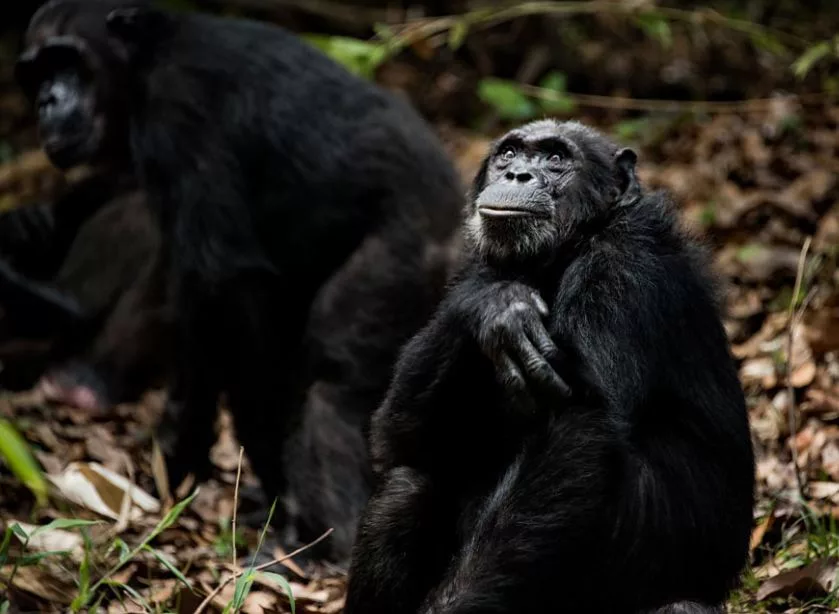
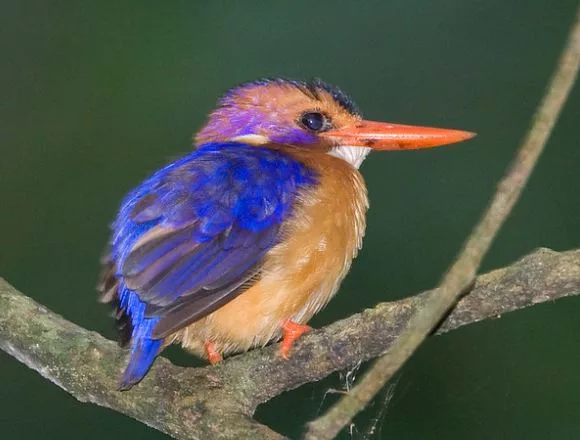
The forest also supports around 465 tree species.
It is known for its giant mahogany trees that stand up to 60 m tall, and whose buttressed bases are often used as drums by roaming chimpanzees.
Part of the of Budongo Forest is situated in Murchison Falls National Park ÔÇô the biggest and prime park for Uganda wildlife safaris.
This huge 3,840 km2 (384,000 hectares) park is where you can enjoy game drives and boat cruise to see buffalos, elephants, leopards, lions, hyenas, hippos, crocodiles, giraffes, shoebills, the historic Nile River, and the worldÔÇÖs strongest waterfall.
Budongo Forest tour is a great add-on to the Murchison Falls Uganda safaris.
Location Of Budongo Forest
Budongo Forest is located approximately 246 km (153 miles) by road (4 to 5-hours) drive northwest of Kampala, the capital city of Uganda.
The rainforest lies at the top of the Albertine Rift at an altitude of 1110 ÔÇô 1590 meters. Budongo Forest Reserve is basically made up of two sites developed for tourism activities ÔÇô Kaniyo Pabidi and the Royal Mile at Busingiro.
Kaniyo Pabidi is located along the southern edge of Murchison Falls National Park. And it is where jungle activities such as chimpanzee trekking take place.
The Royal Mile, which is one of the top tracks for Uganda birding tours, is situated to the western edge of the rainforest, outside of Murchison Falls.
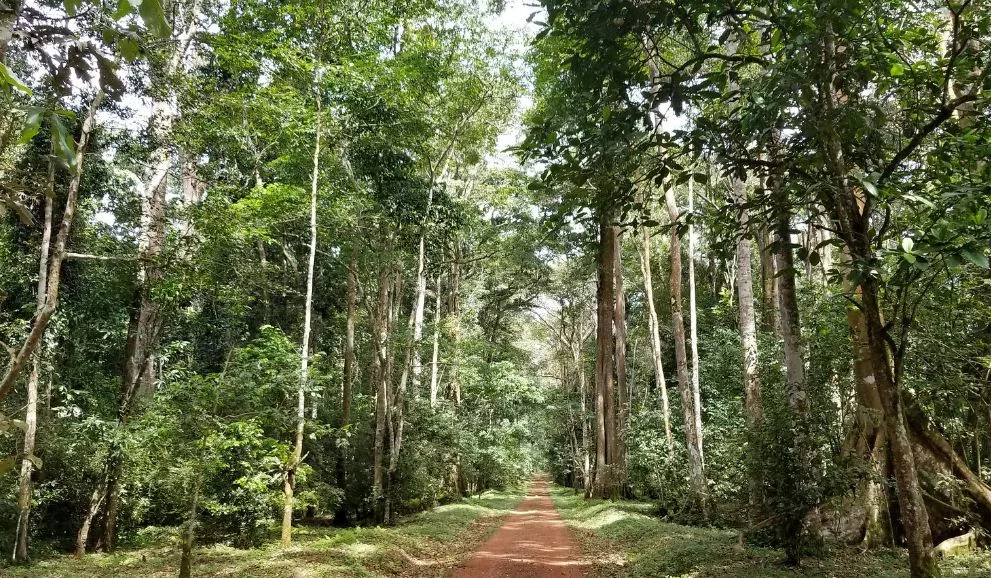
Chimpanzees In Budongo Forest
Budongo is home to around 800 chimpanzees, the second-largest population of chimpanzees in Uganda after Kibale Forest, which has over 1500 chimps.
These humanlike apes share almost 99% of our nuclear DNA, and trekking through the jungle of Budongo to look for them is one of many magical Uganda safari experiences.
Unlike the relatively congenial gorillas with their vegetarian diets, chimps are social, intelligent omnivores. They have their own social complexities, dramas, and antics.
Their body language and facial expressions seem to convey a wide range of emotions we so typically associate with humanity: melancholy, envy, shame, savagerychimps use tools and wage coordinated wars. As a result, many aspects of their wild lives can be viewed through the lens of our evolutionary history.
The chimpanzees of Budongo Forest are Eastern chimpanzees (Pan troglodytes schweinfurthii) – the most common subspecies of chimpanzee found throughout the Central African Republic, Democratic Republic of Congo, Burundi, and Rwanda.
Chimpanzee Trekking In Budongo Forest
A community of around 100 chimpanzees have been researched and carefully habituated for the past 30 years. Field assistants from the Budongo Conservation Field Station can recognize individual chimpanzees on sight, which only adds to what is already a profound and humbling experience.
Budongo Forest offers two trekking sessions each day (morning and afternoon) and no more than 8 persons can trek. Chimp trekking starts with a safety briefing at the visitorÔÇÖs information center at Budongo Eco Lodge. Most treks last around 2 to 5 hours.
Like any safari experience, there is always an element of luck involved, but once contact is made, the chimpanzee viewing in Budongo can be extraordinary.
Budongo Forest Chimpanzee Habituation Experience
Under certain circumstances, visitors may also be allowed to participate in chimpanzee habituation – a rare opportunity in the world of large primate tourism.
While typical chimp treks only allow for an hour spent with the animals, the habituation experience typically entails an entire day spent in the company of chimpanzees.
For lucky tourists, this means accompanying our closest cousins from the time they rise until they make their nests for the evening. The experience is made even more memorable by the giant mahoganies, figs and ironwoods of the magical Forest scenery.
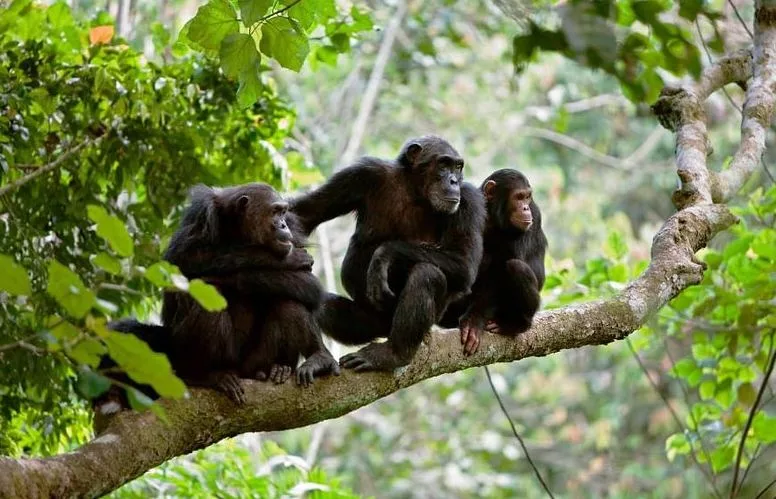
Birding In Budongo Forest Reserve
Budongo Forest has 366 of UgandaÔÇÖs 1097 bird species.
The forest is a prime Uganda birding destination and the second most important in the country after Semuliki National Park for species of Guinea ÔÇô Congo forest Biome.
Indeed, such is the avian wealth of Budongo Forest that the track nicknamed the ÔÇ£Royal MileÔÇØ because it was once a favorite hunting spot of Omukama (King) Kabalega of Bunyoro Kingdom, is widely regarded to be the single most rewarding hotspot for birding in Uganda.
Another excellent birding area in Budongo Forest is Kaniyo Pabidi, which supports a variety of localized forest species including the PuvelÔÇÖs illadopsis which is known not to occur anywhere else in East Africa.
During your Budongo birding tours, you also learn more about the ecosystem, pass the old Mahogany trees, shrubs, and wildlife such as monkeys, and butterflies, and also have a chance of seeing chimps.
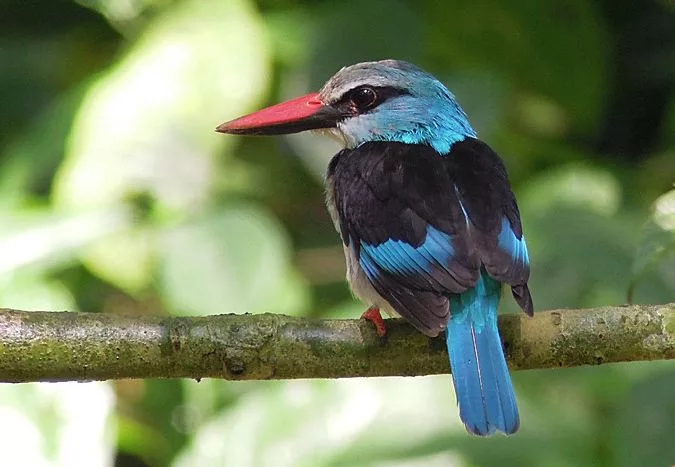
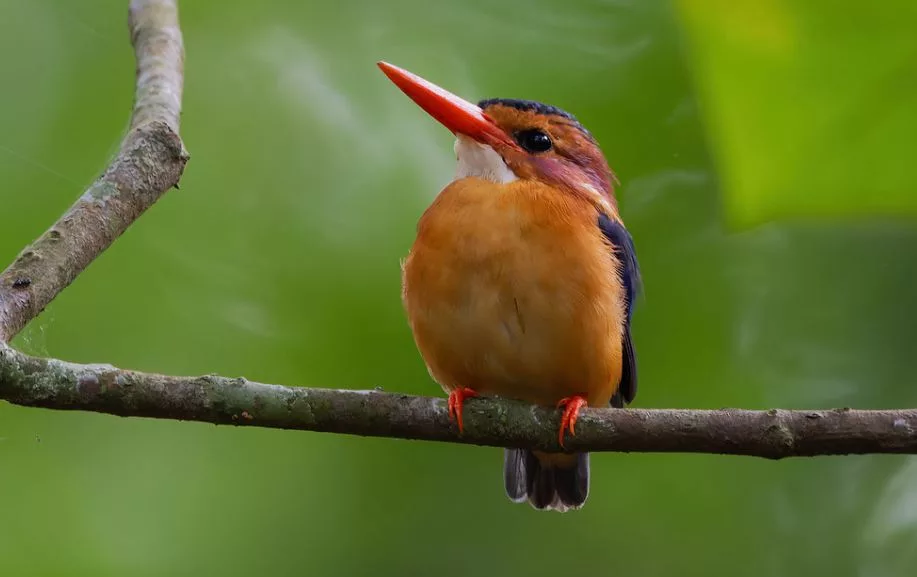
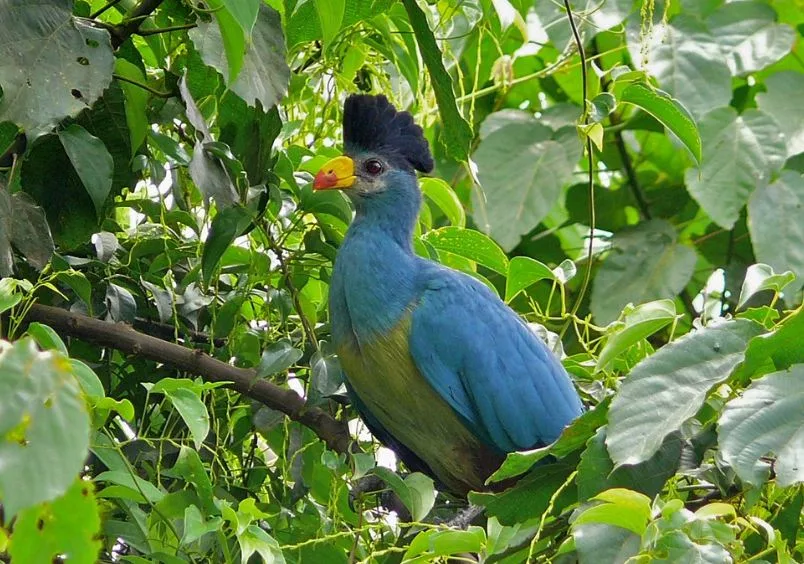
Key Species Of Birds In Budongo Forest
- White-thighed Hornbill
- Yellow-footed Flycatcher
- Narina Trogon
- PuvelÔÇÖs illadopsis
- NahanÔÇÖs Francolin
- CassinÔÇÖs Spinetail
- Red-tailed Bristelbill
- CassinÔÇÖs Hawk-Eagle
- Hairy-breasted Barbet
- Ituri Batis
- Great Blue Turaco
- Black-eared Groundthrush
- Crested Malimbe
- Chocolate-backed Kingfisher
- Yellow and Grey Longbills
- African Dwarf Kingfisher
- Lemon-bellied Crombec
- Blue-breasted Kingfisher
- Black-headed Paradise Flycatcher
- Brown Twinspot
- Dusky long-tailed Cuckoo
- NahanÔÇÖs Partridge
- Chestnut-capped Flycatcher
Budongo Forest Trees
Budongo Forest is home to more than 465 species of plants. Most notable are the impressively gigantic Mahogany trees, which grow up to 60 meters tall.
These fascinating trees have become one of the forestÔÇÖs iconic features.┬á It takes up to 8 people holding hands to round the entire 21-meter diameter of the Mahogany! Other beautiful trees to look out for in Budongo Forest are the spiky Fagara trees, parasitic strangler figs, and ironwood trees. The latter are regularly used by chimps for communication by drumming on their trunks.
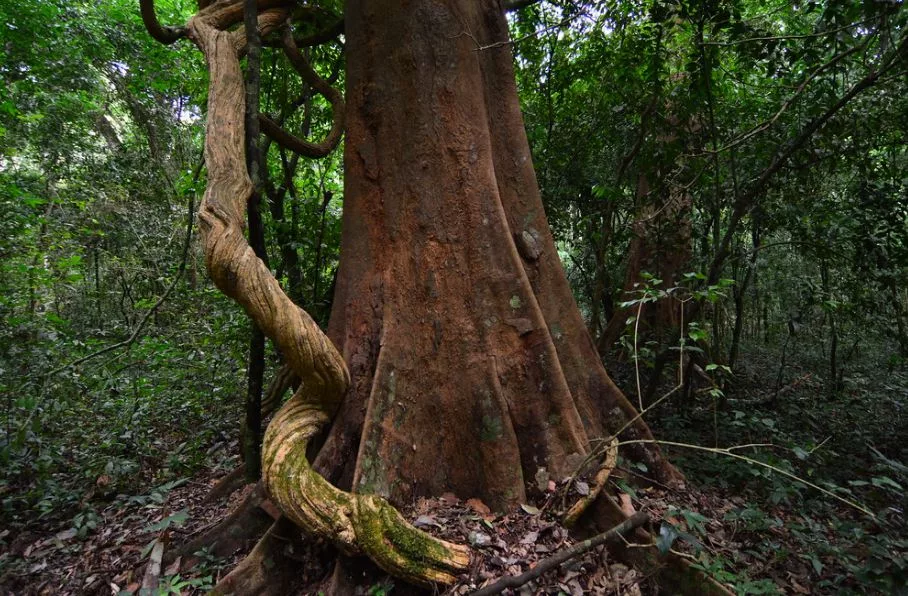
More Wildlife In Budongo Forest
Budongo Forest Reserve, in addition to Chimpanzees, birds and amazing trees, is home to several other wild animals of Uganda.
It is home to 8 species of monkeys including Black-and-White Colobus Monkey, Olive Baboon, Red-tailed Monkey, Blue Monkey, Grey-cheeked Mangabey, Bushbaby or galago, and Potto.
Other animals in Budongo Forest include Tree pangolin, Tree Hyrax, Elephant-shrew, Gigantic hammerhead bats, Red-legged sun squirrel and BoehmÔÇÖs bush squirrel
Budongo Forest Reserve also contains about 289 butterfly species belonging to the following four families: Papilionidae, Pieridae, Nymphalidae, and Lycaenidae. The most notable of these is the African Giant Swallowtail which is the largest butterfly species in Africa with a wingspan of 20-23cm.
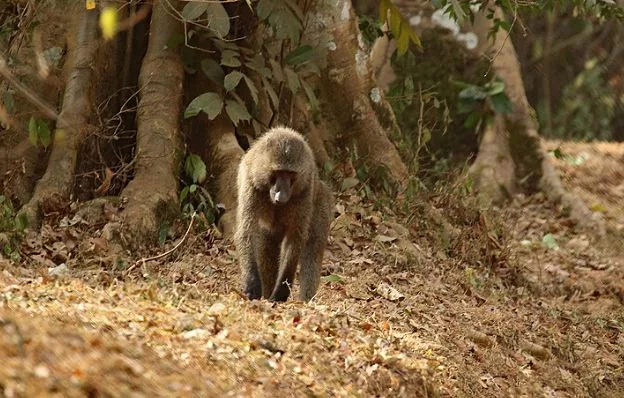
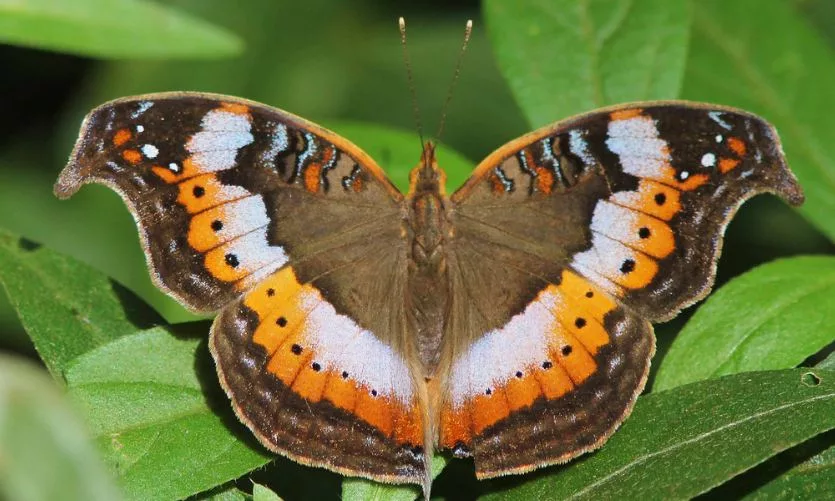
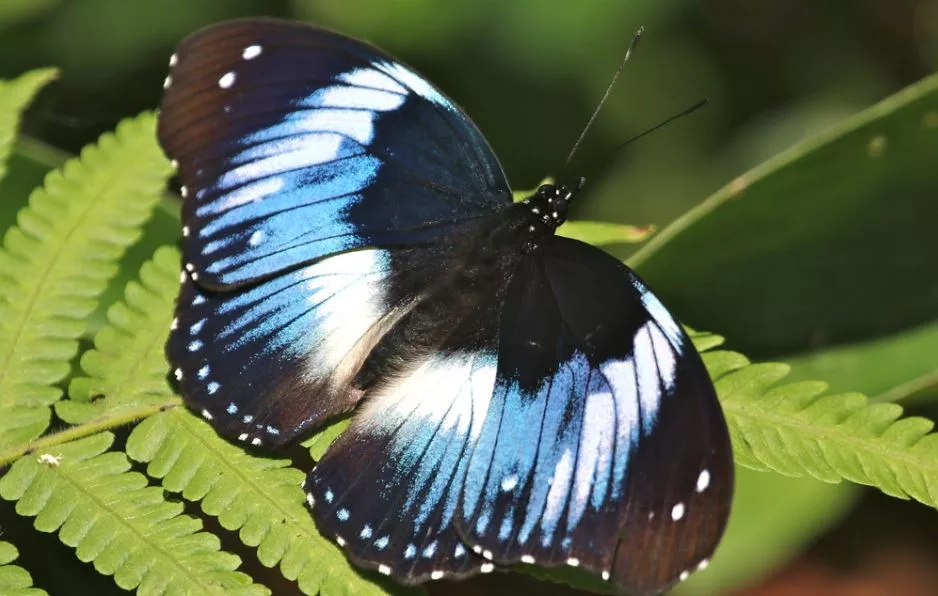
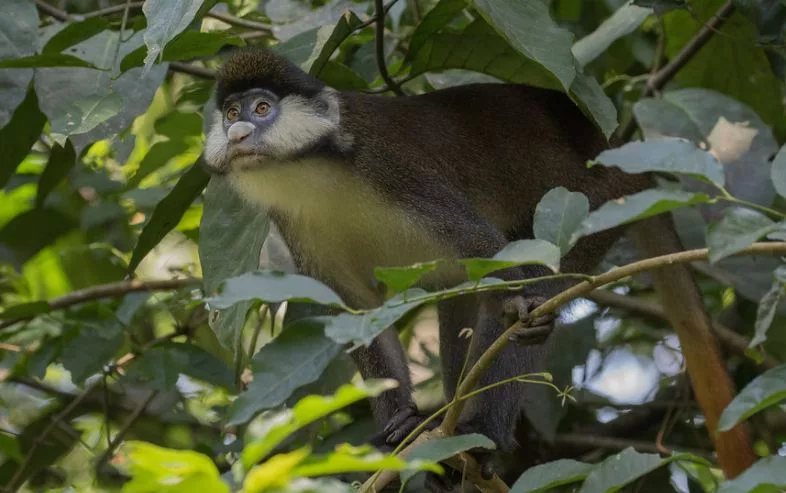
Frequently Asked Questions About Budongo Forest
1. Is Budongo The Largest Forest in Uganda?
Yes, Budongo Forest is the largest natural forest in Uganda with a surface area of 825 square kilometres and is extends across three districts of Masindi, Hoima and the newly created Buliisa district.
2. What Type of Forest Is Budongo?
The Budongo Forest is a moist, semi-deciduous tropical rain forest located at the top of the Albertine Rift, situated between 1┬░ 37 N ÔÇô 2┬░ 03 N and 31┬░ 22 ÔÇô 31┬░ 46 E. It is classified as a Central Forest Reserve.
3. Is Budongo Forest a Natural Forest?
Yes, Budongo Forest is a one and only natural forest that has been in existence for centuries in Uganda.
4. In Which District Is Budongo Forest Found?
Budongo Forest is found in Masindi District in Uganda and part of it is in the Murchison Falls Park.
5. How Much Is Chimpanzee Trekking in Budongo Forest?
A permit for chimpanzee trekking in Budongo forest costs 130 USD per person for foreign non-residents, 120 USD per person for foreign residents and 85 USD per person for East African citizens.
6. What Trees Are in Budongo Forest?
Budongo forest is mostly dominated by ironwood and mahogany trees. It is the largest remaining mahogany forest in east Africa.
7. What Is the Weather Like in Budongo Forest?
Budongo Forest Reserve has a hot, tropical climate. Temperatures range from 32┬░C/90┬░F during the day to a much cooler 17┬░C/63┬░F at night. The area experiences a Wet season from April to October, when rain usually comes as heavy storms. There is little rainfall during the Dry season (December to February).
8. When Is the Time to Visit Budongo Forest?
Understanding the best time to visit Uganda is important as this will impact accommodation, flight prices, availability and the weather that visitors can expect on their safari vacation.
Wildlife viewing, birding and chimpanzee tracking in Budongo Forest are good all year long. It is best from December to March and also in June and August. During this time, there is also lots of sunshine and less rainfall. Chimps are easier to track, and the trails are drier.
9. Where to Stay in Budongo Forest Reserve?
Budongo Eco-Lodge is your only accommodation choice in Budongo Forest. However, because the forest is close to Murchison Falls National Park, most visitors on Uganda tours to Budongo spend the night in Murchison Falls National Park which has a variety of Uganda safari lodges.

